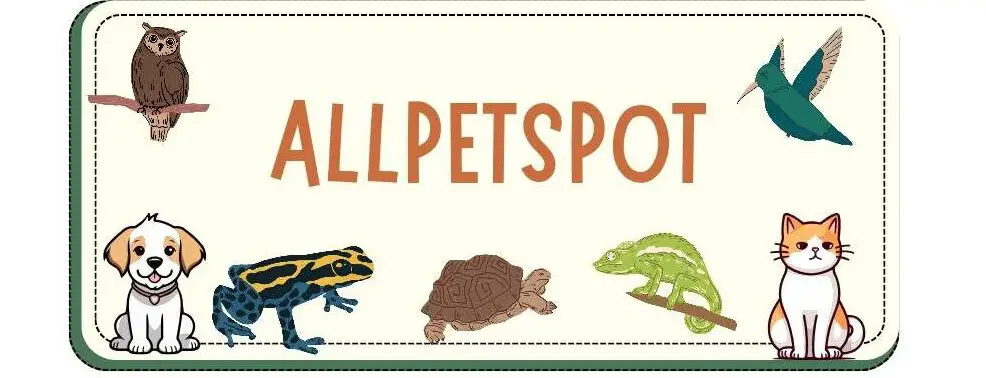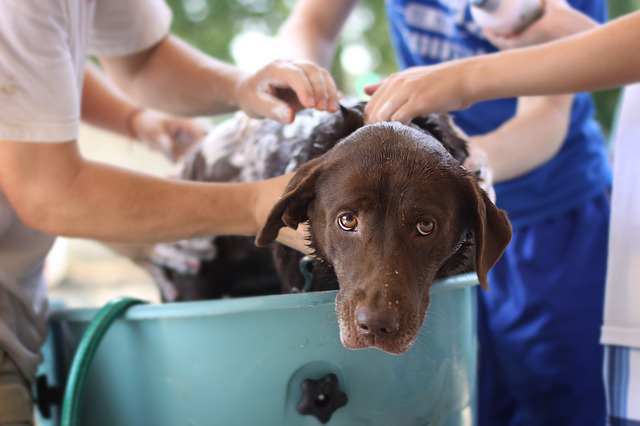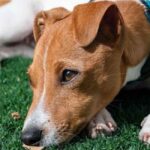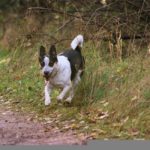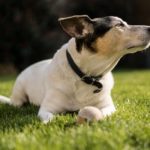Looking for low-maintenance big dogs that will suit your lifestyle or that of your family? You are welcome because in this article we will outline the large breeds of dogs with low maintenance.
We have used dogs as pets for a long time, and it will only get better to have more dogs to keep people company.
We made our top picks after several weeks of research and questioning of many dog owners.
Also, check out the list of the best guard dogs in this article.
Factors that make a dog low maintenance
Here are some factors to consider when selecting a low maintenance dog;
Shedding
Shedding is the detaching of hairs from the skin of dogs this could be seasonal and can be high or low depending on the breed of dog.
A low shedding dog is considered a low maintenance dog because it sheds less and does not give the owner extra work.
Shedding can make your furniture or sits very irritating and give you the job of cleaning, which is stressful.
Grooming
Grooming is the brushing of the hairs in the body of a dog using a brush or other grooming tools.
A dog is considered a low maintenance dog when the dog needs little or no grooming to stay healthy.
Short coat dogs shed less than more long coat dogs. Some dog owners are not ready to invest hours in grooming their dogs.
Here are the carefully selected best dogs for kids you should check out.
Exercise Needs
Low maintenance dogs always have low energy level and low exercise needs.
This is because their owners would not be bothered with providing extra needed exercise to keep them healthy.
Therefore, for a breed to be considered a low maintenance dog, such breed must have low energy and low exercise needs.
Trainability
Training a dog is never an easy task, however, some breeds of dogs are much easier to train compared to other breeds.
For you to say a breed is of low maintenance, then such a breed must be easy to train, not some breeds that will require taking puppy classes and talking to professionals.
Easy to train means less time and effort, which makes life a lot easier and saves costs as well.
Low-Maintenance Big Dogs
Here is the list of big dogs that that are considered as low maintenance dogs;
Manchester Terrier
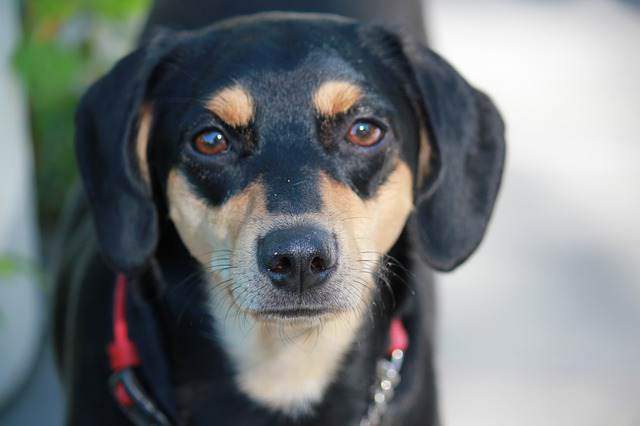
Manchester Terrier was bred to control vermin, a notable rat in the 19th century, Manchester Terrier is among the top low-maintenance big dogs.
The Manchester Terrier is a standard breed that originated from England and was bred to be a home dog.
This breed appears to have a smooth-haired, long tapering nose, narrow flat skull, eyes small and bright. Very intelligent and inquisitive always eager-to-please.
Here are aggressive dog breeds that may hurt your kids, and they require lots of training to be with kids.
Manchester Terrier Nutrition
The Manchester Terrier is not picky with food and can do well in good quality dog food as long as it meets some quality requirements.
This breed can also do well on homemade human meals, however, if you want to start giving homemade food then you have to introduce it bit by bit and watch how your dog reacts to it.
Always remember that too many treats can lead to obesity and do not fail to contact your vet before feeding homemade meals or if you notice any reaction.
Manchester Terrier Shedding
The Manchester Terrier comes in short coat and shedding is minimal, this breed shed occasionally and has low maintenance coat.
Your right to give this breed a 2/5 star rating in terms of shedding, you can also say this breed is among the large breeds of dogs that have minimal shedding.
Manchester Terrier Grooming
The Manchester Terrier need minimal grooming because of its short coat, it is right to say that grooming once a week is not a bad idea.
Also trim the nails once in a while, bathing the Manchester Terrier should be done once in 3 weeks or when you have a chance.
Use good quality shampoo to bathe your dog and make sure this breed does not get wet for long.
Also, read 13 reasons why dogs are aggressive.
Manchester Terrier Health
Manchester Terrier is a healthy breed of dog and your right to give this breed a 4/5 star rating.
There is some primary medical test you need to carry out before getting this breed, which are as follows;
- Ophthalmologist Evaluation
- Thyroid Evaluation
- Von Willebrand’s Disease DNA Test
Manchester Terrier Trainability
The Manchester Terrier is very intelligent and easy to train according to The American Kennel Club.
Manchester Terrier Energy Level
The Manchester Terrier require moderate exercise, just like any other dog.
You can provide interactive toys as a form of exercise and overall you can give this breed a 3/5 star rating for energy level.
You don’t need extra form of exercise for this breed simple evening walk is good for this breed.
Manchester Terrier Profile
Here are some important facts about the Manchester Terrier you should know;
Manchester Terrier colors
The Manchester Terrier comes in a range of colors ranging as follows;
- Black
- Black & Tan
- Tan
- Blue & Tan
- Blue
Here are Tricks On How To Stop Your Dogs From Being Aggressive.
Manchester Terrier Temperaments
Here are some unique Manchester Terrier temperaments;
- Alert
- Intelligent
- Active
- Affectionate
- Devoted
- Keen
- Cheerful
- Sociable
Manchester Terrier Size
Here is the average size of Manchester Terrier;
Height: A full-grown male Manchester Terrier can grow around 40 cm or more.
While a full-grown Manchester Terrier can grow around 36 cm or more.
Weight: A full-grown male Manchester Terrier can weigh around 10kg or more.
While a full-grown female Manchester Terrier can weigh up to 6kg or more.
Manchester Terrier Life Span
A healthy Manchester Terrier can live for about 17 years or more under proper medical attention and care.
Manchester Terrier price
A healthy Manchester Terrier on average will cost around $300-$800 depending on the breeder’s price tags.
Also, check out the list of the best-hunting dogs.
Bullmastiff
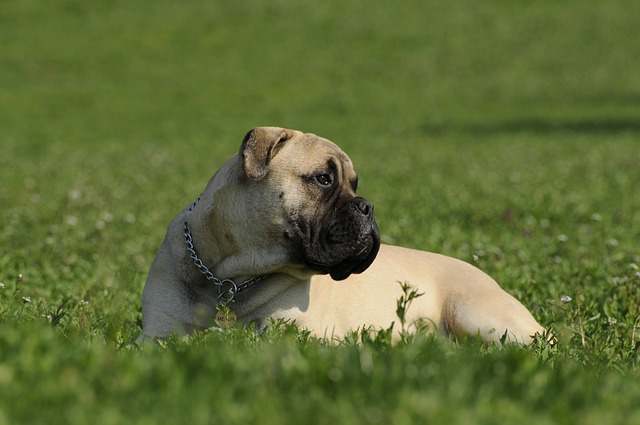
Bullmastiff is a massive large breed of dog that was selectively bred to protect estates.
The Bullmastiff originated from the United Kingdom and is dated back to the 19th-century. Bullmastiff is one of the best low-maintenance big dogs.
Bullmastiff was bred by crossing the English Mastiff with the now-extinct Old English Bulldog.
Bullmastiff Nutrition
One important thing to note is that with the right food, Bullmastiff grow rapidly more than you would expect.
Feeding is an essential part of a Bullmastiff life because they love food, no matter what, do not feed more than twice a day.
Don’t give room for exercises immediately after or before meals, Bullmastiff will always want more.
Be careful with what you feed and how you feed to avoid obesity, which is common with the Bullmastiff. Bullmastiff also do well on human food.
Here are some reasons why hunting dogs fail during hunting.
Bullmastiff Shedding
The Bullmastiff sheds occasionally and very minimal because of their short coat.
Good meal and good environment affect the level of shedding in Bullmastiff. It is right to give the Bullmastiff a 3/5 star rating for shedding.
Bullmastiff Grooming
The Bullmastiff require minimal grooming because of their short coat, and you should give your Bullmastiff a bathe after every 2 weeks.
Brushing should be done once in every 9 to 12 days. If you notice much shedding, then something is wrong.
Bullmastiff Health
The Bullmastiff is a large breed with heavy bones which might post a little health challenge.
However, Bullmastiffs are generally healthy but some medical test are required to be taken which are as follows;
- Ophthalmologist
- Cardiac
- Thyroid
- Hip
- Elbow Evaluation
Bullmastiff Energy Level
Bullmastiff has a low energy level and does not require high exercise to stay fit and healthy.
Once they are relaxed, they can sleep for about 6-9 hours a day without disturbances.
Check out the 11 types of aggression associated with dogs.
Bullmastiff Profile
Here are some important facts about the Bullmastiff you should know;
Bullmastiff Colors
The Bullmastiff comes in three basic colors which are as follows;
- Brindle
- Fawn
- Red
Bullmastiff Temperaments
Here are some unique Bullmastiff temperaments you should know;
- Loyal
- Docile
- Protective
- Powerful
- Devoted
- Reserved
- Reliable
- Alert
- Loving
Bullmastiff Life Span
A healthy Bullmastiff under proper care and medical attention will live for about 12 years or more.
Bullmastiff Price
A healthy Bullmastiff on average will cost around $500-$1500, the amount differs from one breeder to another, and also size matters.
Bullmastiff Size
Height: The average size of a full-grown male Bullmastiff will grow up to 67 cm or more.
While a full-grown female Bullmastiff will grow up to 66 cm or more.
Weight: The average weight of a full-grown male Bullmastiff is about 58 kg or more
While a full-grown female Bullmastiff can weigh up to 53 kg or more.
Here are the 5 Safe Best Vegetables For Dogs You May Not Have Known.
Dalmatian

The Dalmatian is among the nonsporting group of dogs that were bred for hunting, and they originated from Croatia.
This is not a popular breed of dog but when you speak of low maintenance breed of dogs, then Dalmatian can be placed at the top.
If you allow me to pick i will definitely pick the Dalmatian as one of the best among low-maintenance big dogs.
Dalmatian Nutrition
Dalmatian needs good quality dog food and not table scraps, avoid human food that is high in fat.
Do not give high calcium meals and if you must feed, then do not go with everyday human food.
Simple dog food is better than table scraps and high fat food. Always contact your vet before changing meal.
Dalmatian Shedding
Dalmatian are not big shedders, and brushing will help keep shedding in control.
However, since they have white coat shedding is very clear on like other breeds, they have a short coat that can shed occasionally.
Check out the 6 best pets for Apartments.
Dalmatian Grooming
The Dalmatian require nothing above the usual grooming needs of any dog; bathing, dental hygiene, and the occasional nail clipping.
Brushing once a week is not a bad practice, their fur is always clear when it drops because it’s white.
Dalmatian Health
Dalmatian is generally healthy and happy however, there is a single health condition that is seen in most Dalmatian which is deafness.
So before getting a Dalmatian, be sure to carry out the following health tests;
- Deafness test
- BAER test
- Hip evaluation
Dalmatian Profile
Here are some informations you should know about the Dalmatian breed of dog;
Dalmatian Colors
Dalmatian dog comes in two mixed colors which are as follows;
- Liver & White
- Black & White
Dalmatian Life Span
A healthy Dalmatian under proper care and medical attention will live for about 14 years or more.
Recommended post: 8 Best Cat Breeds For Kids Under 13 Years.
Dalmatian Temperaments
Here are some unique Dalmatian temperaments you should know;
- Intelligent
- Playful
- Friendly
- Energetic
- Outgoing
- Sensitive
- Active
Dalmatian Size
Here are the height and weight of the Dalmatian dog;
Weight: A healthy full-grown male Dalmatian dog when properly fed will weigh around 33 kg or more.
While a properly fed full-grown female Dalmatian will weigh about 27 kg or more.
Dalmatian price
A healthy Dalmatian dog on average will cost about $400-$800 or more depending on the breeder’s price tag and size.
Recommended post: Best Cats For Apartment.
Labrador Retriever

The Labrador Retriever is one of the most popular breeds of dogs in the western world and other part of the world.
This breed was selectively bred to retrieve shot games and was said to originate from Newfoundland in UK.
We classify the Labrador Retriever among the Low-maintenance big dogs and sporting groups of dogs.
Also, read 9 Most Protective Dog Breeds That Can Die For You.
Labrador Retriever Nutrition
The Labrador Retriever is among the top breed of dogs that does well on both high-quality dog food and homemade dog food.
We should not feed this breed with table scraps, and because of overweight issues, never feed this breed 3 times a day.
Labrador Retriever Health
The Labrador Retriever is among the top healthy living breeds of dogs, which does well once you get your feeding well.
Just like any other breeds, there are some medical tests you should run on this breed, which are as follows;
- Ophthalmologist Evaluation
- EIC DNA Test
- Hip Evaluation
- Elbow Evaluation
Labrador Retriever Grooming
Labrador Retriever has a thick, water-repellant double coat that needs to be brushed once every week.
You can get good grooming tool for your weekly grooming on Amazon.
Recommended post: Human Foods Dogs Can Eat – 11 Safe Food For Dogs.
Labrador Retriever Shedding
Since Labrador Retriever has thick short coat shedding is minimal and not always noticeable.
They can shed occasionally, just like other dogs. The good thing is that you can reduce shedding with proper grooming and high-quality dog food.
Labrador Retriever Exercise Needs
The Labrador Retriever does well with or without excellent exercises, however, be sure to provide interactive toys and take them to swim once in a while.
Here are the 12 Advantages Of Socializing German Shepherd Puppy.
Labrador Retriever Profile
Here are some important facts about the Labrador Retriever you should know;
Labrador Retriever Temperaments
Here are some unique Labrador Retriever temperaments you should know;
- Intelligent
- Even Tempered
- Kind
- Outgoing
- Agile
- Trusting
- Gentle
Labrador Retriever Life Span
A healthy and happy Labrador Retriever under proper care and medical attention will live for about 14 years or more.
Read more about the Top Qualities Of A Good Hunting Dog.
Labrador Retriever Colors
The Labrador Retriever comes in three basic colors, which are as follows;
- Black
- Chocolate
- Yellow
Labrador Retriever Price
A healthy Labrador Retriever will cost around $400 -$1300 or more depending on the breeder’s price tag, size and age.
Labrador Retriever Size
Weight: On average, a healthy male Labrador Retriever will weigh around 35 kg or more.
A full-grown female Labrador Retriever on average will weigh around 32 kg or more.
Height: A full-grown Labrador Retriever male dog can grow around 62 cm or more.
While a full-grown female Labrador Retriever will grow up to 60 cm or more.
Here are the best dogs that can defeat a wolf.
Other 10 Low-Maintenance Big Dogs
Here are other breeds of dogs that are considered as low-maintenance big dogs.
That we pick our top four doesn’t necessarily mean there are no other low-maintenance big dogs. That been said lets outline other low-maintenance big dogs;
- Bull Terrier
- Italian Greyhound
- Bloodhound
- Rhodesian Ridgeback
- Irish Staffordshire
- Ibizan Hound
- Rottweiler
- Australian Cattle Dog
- Standard Poodle
- German shepherd
Check out other great article about benefits of having pets you should know both the health benefits.
Recommended post: Facts For Choosing A Pet Dog For Kids Under 16 Years.
